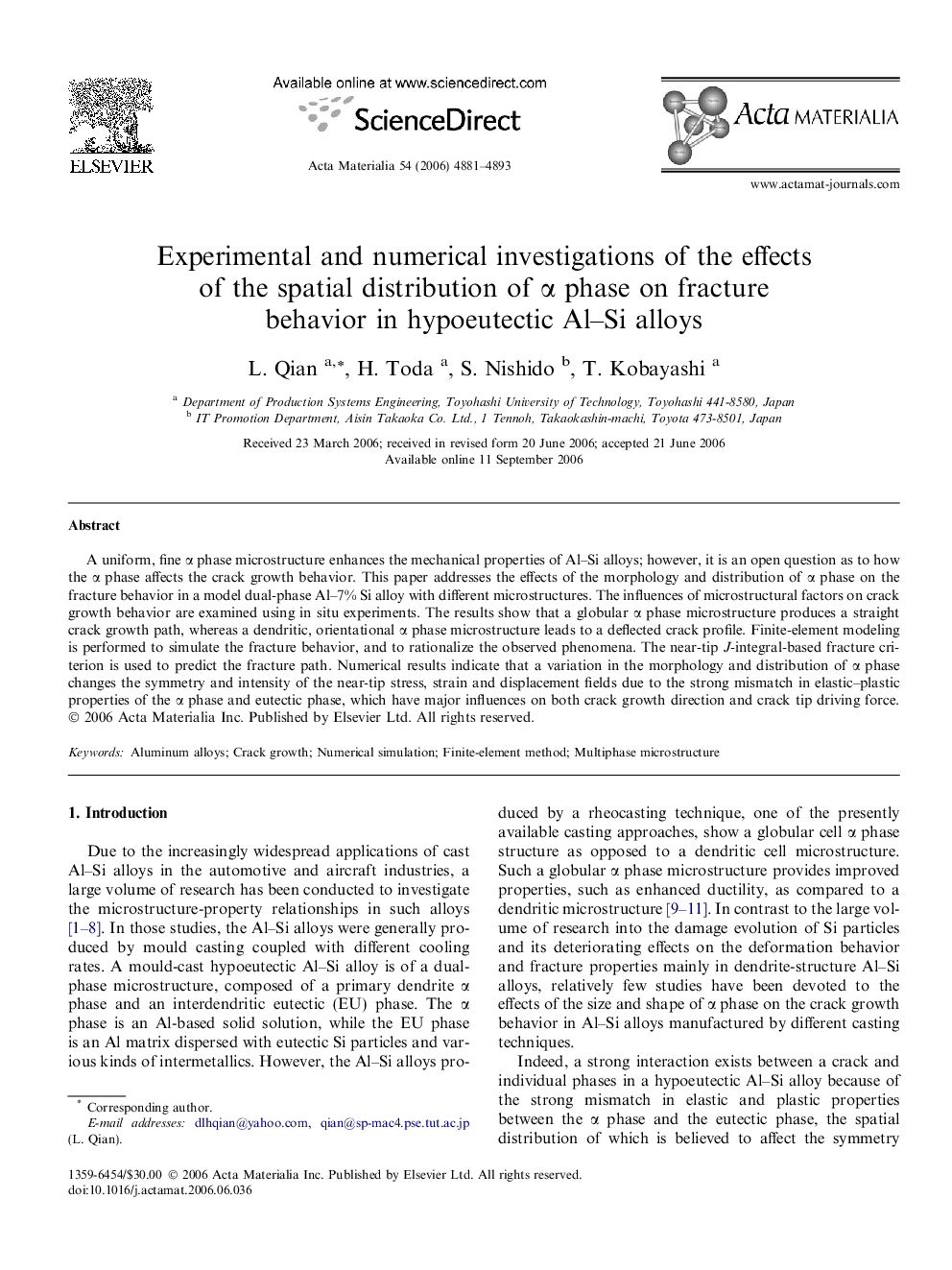| Article ID | Journal | Published Year | Pages | File Type |
|---|---|---|---|---|
| 1450148 | Acta Materialia | 2006 | 13 Pages |
A uniform, fine α phase microstructure enhances the mechanical properties of Al–Si alloys; however, it is an open question as to how the α phase affects the crack growth behavior. This paper addresses the effects of the morphology and distribution of α phase on the fracture behavior in a model dual-phase Al–7% Si alloy with different microstructures. The influences of microstructural factors on crack growth behavior are examined using in situ experiments. The results show that a globular α phase microstructure produces a straight crack growth path, whereas a dendritic, orientational α phase microstructure leads to a deflected crack profile. Finite-element modeling is performed to simulate the fracture behavior, and to rationalize the observed phenomena. The near-tip J-integral-based fracture criterion is used to predict the fracture path. Numerical results indicate that a variation in the morphology and distribution of α phase changes the symmetry and intensity of the near-tip stress, strain and displacement fields due to the strong mismatch in elastic–plastic properties of the α phase and eutectic phase, which have major influences on both crack growth direction and crack tip driving force.
